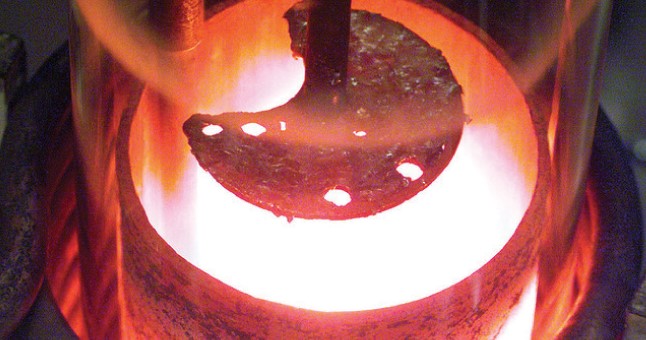
Excluding equipment and construction, the National Nuclear Security Administration will spend about $1 billion over 10 years to study the effects of aging on nuclear-weapon cores, the Government Accountability Office reported this week.
According to the Government Accountability Office’s (GAO) unclassified review of the National Nuclear Security Administration’s (NNSA) classified “Research Program Plan for Plutonium Pit Aging,” the agency will spend $1 billion between 2021 and 2030 on experiments, modeling, and simulation activities to characterize how plutonium pits in existing nuclear weapons age.
That estimate does not cover the cost of either the equipment necessary to conduct the tests or a new underground laboratory in Nevada to house that equipment.
As of March 2023, NNSA estimated that a new x-ray imager called Scorpius and associated upgrades at Nevada’s Principal Underground Laboratory for Subcritical Experimentation, formerly called the U1a complex, will cost about $2.6 billion, according to an Aug. 30 GAO report.
Scorpius, meanwhile, may not even be ready until 2030, according to officials at the Los Alamos National Laboratory.
The six-page report GAO released Thursday was a summary of a classified briefing the office gave congressional committees in November. In the National Defense Authorization Act for 2023, Congress told the GAO to vet the pit-aging plan that NNSA was ordered to draw up as part of the 2021 National Defense Authorization Act.
Congress handed down that order after independent advisory groups in 2018 and 2019 “reported that NNSA was not sufficiently prioritizing plutonium and pit aging research,” GAO reported this week. Pits are the fissile cores of nuclear weapon primary stages.
The U.S. has not conducted a nuclear explosive test since 1992 and NNSA officials insist they have no plans to do so. Instead, as part of what is known as the stockpile stewardship program, the agency has relied on data from explosive nuclear weapons tests combined with supercomputer simulations and subcritical explosive plutonium experiments.
Most pits in the U.S. stockpile are at least 30 years old, GAO said in its report this week, and shot through with byproducts of radioactive decay, such as helium, that could produce a lower-than-expected yield in the primary stages of nuclear weapons.
That would affect the ultimate yield of the secondary stage of the warhead, the GAO said. Helium and other elements can form bubbles within plutonium metal that can affect its strength and change the way a pit compresses.
“Scientists and other weapons experts have identified concerns that radioactive decay of plutonium in a pit, called aging, over many years may degrade a weapon’s performance,” the GAO report said. “The concern about such changes in plutonium is that, over time, they could lead to an unacceptable yield reduction in a weapon’s first stage.”
Pit aging has become a flashpoint between people who support quicker and more thorough refurbishment of the U.S. nuclear arsenal and people who say that upgrades and overhauls can wait.
Some public estimates place pit lifetimes at 75 to 80 years or longer. In a 2007 report, before they were funded almost exclusively by the NNSA, the JASON group of independent scientists said that “[m]ost primary types have credible minimum lifetimes in excess of 100 years as regards aging of plutonium; those with assessed minimum lifetimes of 100 years or less have clear mitigation paths that are proposed and/or being implemented.”
In 2022, Marvin Adams, NNSA’s deputy administrator for defense programs, told attendees of the Exchange Monitor’s annual Nuclear Deterrence Summit that “[i]f somebody just gives you a blanket statement, like ‘pits last a hundred years,’ … you might question whether they know all that much about what they’re talking about.”